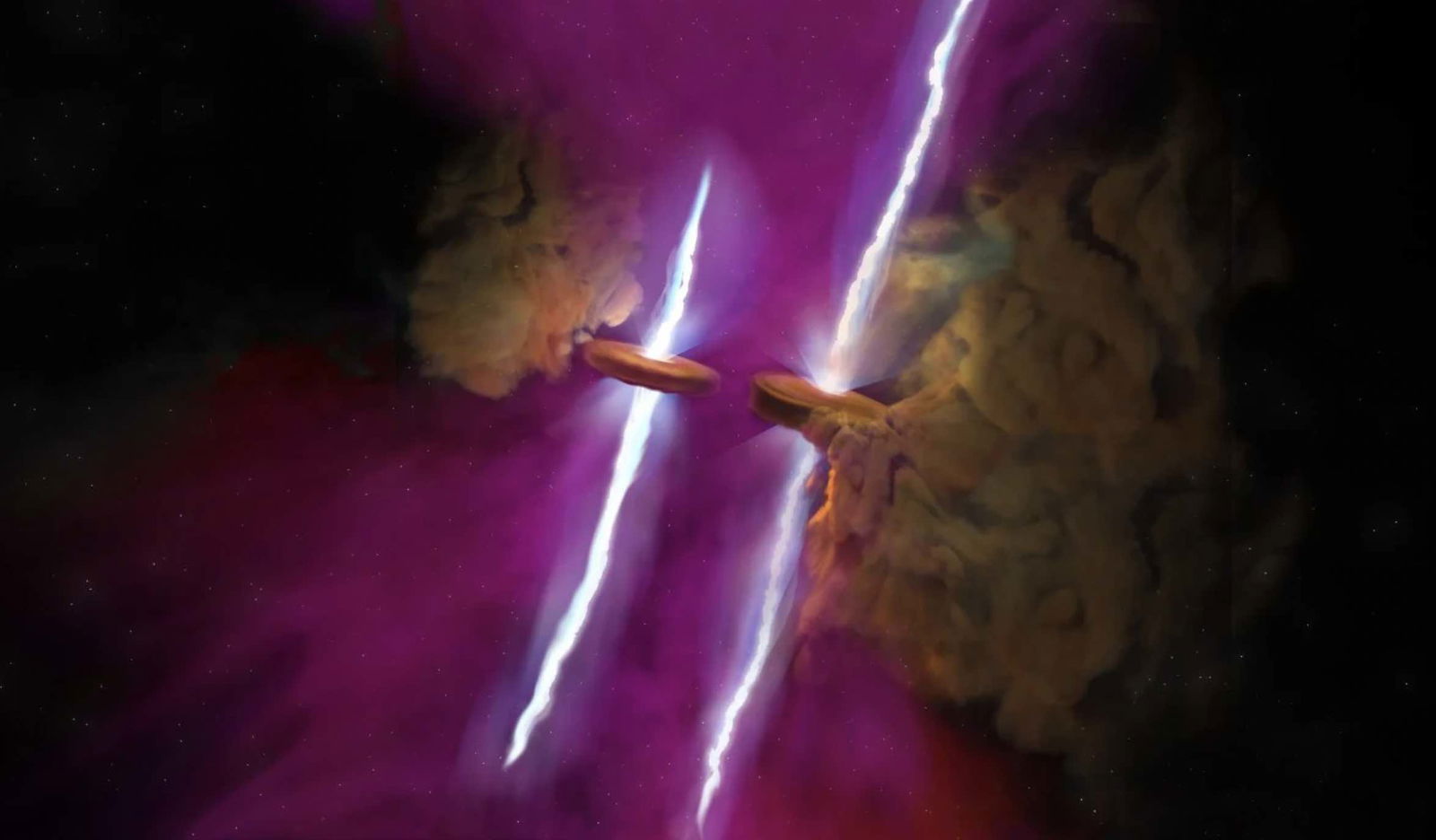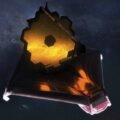A team of astronomers say they have made a jaw-dropping new discovery with help from NASA’s James Webb Space Telescope.
According to new findings by Webb, NASA’s premiere space science observatory, and the Atacama Large Millimeter/submillimeter Array (ALMA), a distant celestial object once believed to represent a single star is actually a twin system.
The discovery reveals that that WL 20S possesses gas and dust disks encircling each of the stars in the newly recognized twin system, features that point to the likelihood of ongoing planet formation that could potentially offer new clues into stellar life cycles.
The recent discoveries were made possible by Webb’s powerful Mid-Infrared Instrument (MIRI), and were presented at a recent meeting of the American Astronomical Society, where astronomers revealed that the twin stars also possess matching jets of gas that have been observed streaming into space from their north and south poles.
James Webb Space Telescope Makes a Surprising Discovery
During observations of WL 20, a small neighborhood of relatively young stars that has been known since the 1970s and studied by close to half a dozen telescopes over the decades, astronomers were treated to a discovery that took them very much by surprise.
“Our jaws dropped,” confirmed astronomer Mary Barsony, lead author of a new paper describing the results. Thanks to the incredible resolution and sensitivity of Webb’s instruments, it quickly became apparent that WL 20S was not one, but two stars.
“After studying this source for decades, we thought we knew it pretty well. But without MIRI we would not have known this was two stars or that these jets existed,” Barsony said. “That’s really astonishing. It’s like having brand new eyes.”
The pair of stars is believed to have formed between 2 million to 4 million years ago. However, the twin revelation wasn’t the only surprise Barsony and her colleagues received: additional observations made with ALMA revealed that disks of gas and dust surrounding each of the stars means that planets may be forming around them as well.
The Lifespans of Stars
The new observations offer astronomers an ideal opportunity to learn about the transitional period stars undergo as they progress from their early lifespans toward adulthood.
“The power of these two telescopes together is really incredible,” said Mike Ressler, project scientist for MIRI at NASA’s Jet Propulsion Laboratory and co-author of the new study, in a statement. “If we hadn’t seen that these were two stars, the ALMA results might have just looked like a single disk with a gap in the middle.”
“Instead, we have new data about two stars that are clearly at a critical point in their lives, when the processes that formed them are petering out,” Ressler adds.
The stars in WL 20 exist in a larger region known as Rho Ophiuchi, which is an immense cloud of gas and dust located approximately 400 light-years from Earth. Most of the visible light WL 20 produces is blocked by the surrounding gas and dust, although Webb’s instruments make it possible to observe them in unprecedented detail thanks to its ability to detect light at longer infrared wavelengths.
Radio Waves Offer Additional Clues
Similarly, radio waves produced by such stellar sources can also punch through these dense gaseous formations, making them detectable by radio telescopic arrays like those at ALMA. This also makes the Chilean array well equipped for observing clouds surrounding young stars which are the byproduct of formation processes. However, since clouds of this sort were not detected during the recent observations, it appears to lend further weight to the idea that the stars in WL 20 are well beyond their initial formation phase.
“It’s amazing that this region still has so much to teach us about the life cycle of stars,” Ressler added of the team’s recent discoveries.
“I’m thrilled to see what else Webb will reveal,” he added.
Micah Hanks is the Editor-in-Chief and Co-Founder of The Debrief. He can be reached by email at micah@thedebrief.org. Follow his work at micahhanks.com and on X: @MicahHanks.

